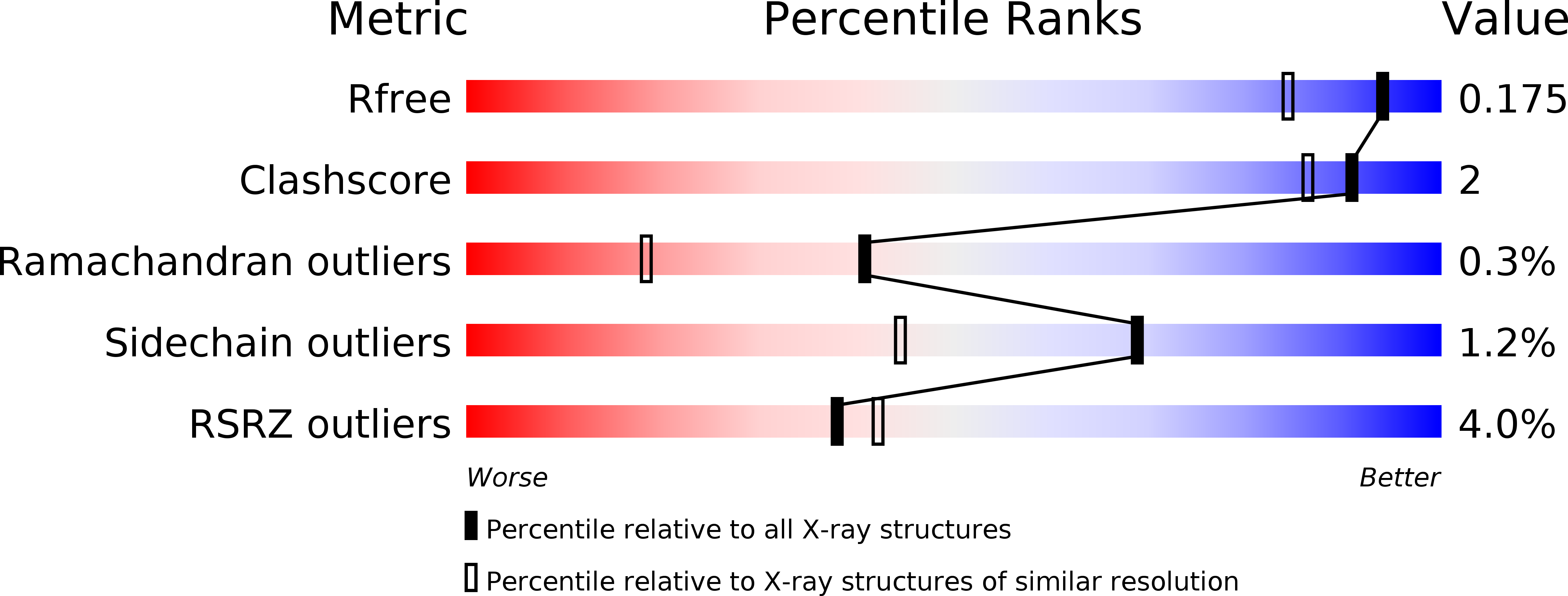
Deposition Date
2013-06-30
Release Date
2013-10-02
Last Version Date
2024-11-06
Entry Detail
PDB ID:
4LGX
Keywords:
Title:
Structure of Chitinase D from Serratia proteamaculans revealed an unusually constrained substrate binding site
Biological Source:
Source Organism:
Serratia proteamaculans (Taxon ID: 399741)
Host Organism:
Method Details:
Experimental Method:
Resolution:
1.49 Å
R-Value Free:
0.17
R-Value Work:
0.16
R-Value Observed:
0.16
Space Group:
P 21 21 2


